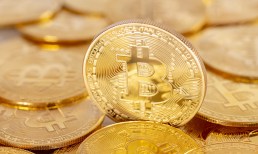Payments have long been the conduit for new and different experiences in commerce. Look no further than the past year as proof as contactless payments, digital banking and digital wallets gained significant traction. Cryptos, too, of course — and bit by bit, we’re seeing the rise of the super app, where transactions are aggregated, secured and presented to the consumer in a more user-friendly mobile fashion.
As these connected ecosystems emerge, new intermediaries are emerging as well. These intermediaries can serve as the gateway to new experiences — perhaps even influencing and incentivizing how transactions are done, at least over the long term.
In an interview with Karen Webster, Jim McCarthy, president of digital payment infrastructure provider i2c, acknowledged that intermediaries are emerging that have made it their mission to make consumer payment interactions across these increasingly connected ecosystems less friction-filled. Those intermediaries, according to McCarthy, are in the proverbial driver’s seat. To be sure, the role of the intermediary is not a new one. But in the brick and mortar model of commerce, incentivizing consumers to try new payments and rewards options was a bit of a heavy lift.
For example, for Walmart and other large retailers, even those with large installed bases, he said, it was difficult to insert new payments (or rewards options) at the point of sale without introducing new friction. (An impatient queue of shoppers would snake down the aisle while the consumer made up his or her mind at the register). But in the digital age, all stages of the interaction — pre-, during or post-transaction — incentivizing transactions is marked by broad potential. Amazon, for example, has been bringing buyers and sellers together for a long time through a seamless marketplace, marked, of course, by one-click ordering.
“[Amazon] knew that they needed to own the payment rail, and take the friction out. And that led to a bunch of other really smart things like authentication and understanding the customer,” he said.
Along the way, they’ve put the customer at the center of the equation (through, for example, their “A to Z Guarantee” that covers timely delivery). Accepting any card, at least for now, the eCommerce giant has not wanted to incentivize the consumer to shift preference to their own branded payments option or otherwise make changes at the point of sale to nudge them toward different (preferred) payment choices.
Advertisement: Scroll to Continue
Ebb And Flow
That was then.
It’s an evolution that has a prologue. PayPal fashioned a center of gravity in a walled garden known as eBay — gaining the consumer base to break free from eBay and ignite a consumer/merchant network across the web.
But with the emergence of buy now, pay later (BNPL) and other options, McCarthy said, there comes a point where conversion at the point of sale peaks and clutter can be the unfortunate result. (McCarthy said we’re likely to see digital wallets consolidate to just a few major players: “more than four or five, but less than 50.” With its ability to protect credentials and give consumers a feeling of control, Apple Pay is likely to remain a major player).
But, “there comes a day where alternatives appear,” he said, “and we’re starting to see some of those alternatives with real-time payments with cryptocurrencies,” he said. Amazon and other intermediaries — armed with the consumer’s trust — may start to influence those payment decisions in ways that the incumbents may not like.
“We’re entering a new phase here where the choices are appearing, the tools exist, this mega kind of eCommerce/app players will have a lot of trust and a large consumer base to work with,” he said.
New networks can take shape, of course, without intermediaries — a key selling point of decentralized finance and cryptocurrencies.
“It’s a threat, but I wouldn’t call it existential,” he said, “like a lot of things that were threats in the past, the incumbents do a good job of at least steering them into a space that works well, or at least cooperatively.” The “unknown” buyer/seller relationship without an intermediary is problematic (though stablecoins, he said, “are fairly well trusted when they’re pegged” to some underlying value).
He noted that even with the advent of bitcoin, there had been an explosion of exchanges and wallets that nonetheless use Visa or Mastercard as an on- or off-ramp. We’re also seeing announcements where Visa treats crypto akin to just another kind of fiat for settlement purposes. Traditional rails, he said, can help create a connected experience.
Building Trust
In forging new commerce ecosystems, it all boils down to trust, he said, and in many cases, intermediaries can build that trust. With technology at the point of sale, those intermediaries have given merchants new ways to convert sales beyond what might be seen as the classic, clunky point of sale options seen in brick-and-mortar commerce.
Of the emergence of the connected economy, said McCarthy — the when and the how of it all — “people are very impatient when you’re in the moment. It takes a while.” It took Visa 60 years, you know, to get to its current standing as a network of networks. ATMs didn’t get connected through switches for 20 years. Debit took 20 years to become mainstream.
But, according to McCarthy: give it time; this will happen. “Whether you’re the marketplace or the super app,” he told Webster, “you’re going to build payments into the heart of what you’re doing … you can’t have a connected economy without payments at the heart of it.”



